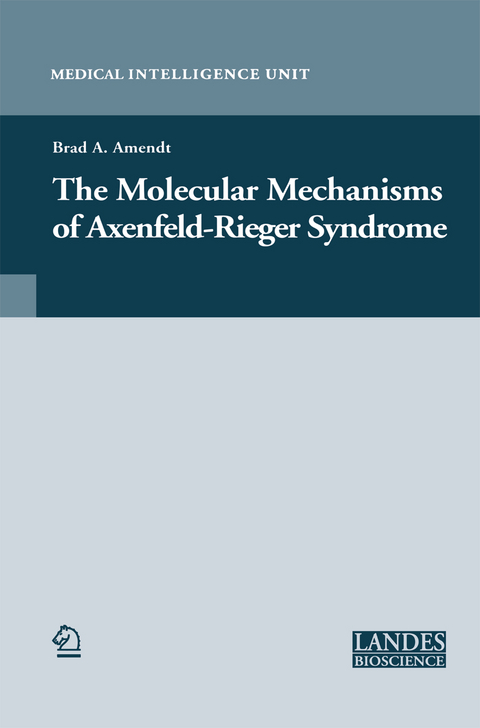
The Molecular Mechanisms of Axenfeld-Rieger Syndrome
Seiten
2014
Springer-Verlag New York Inc.
978-1-4899-9664-0 (ISBN)
Springer-Verlag New York Inc.
978-1-4899-9664-0 (ISBN)
We are excited to bring together recent research on the molecular biology of Axenfeld-Rieger syndrome (ARS) disorders. In the following chapters we will review and provide direct evidence for the molecular basis of this group of heterogeneous disorders, which include Rieger syndrome and Rieger anomaly. While ARS patients were initially diagnosed in the early 1930s the genetic basis for ARS was unknown until the recent identification of chromo- somal loci associated with this genetic disorder. In the mid-1990s Drs. Jeffrey C. Murray and Elena V. Semina identified PITX2 through positional cloning tech- niques as a gene associated with ARS. These researchers were able to iden- tify point mutations in PITX2 that were linked with ARS patients. ARS patients presented clinically with several developmental anomalies that fur- ther provided clues about the function of the PITX2 homeobox tran- scription factor. The phenotypic variability of ARS patients indicates that PITX2 can participate with many other faaors to control normal development processes. The hallmarks of ARS developmental anomalies are eye, tooth and umbilical defects.
However, abnormal pituitary, heart, and craniofacial development are also detected. Thus, ARS patients provided the first link of PITX2 involvement in the development of these organs and structures. Some of these anomalies are recapitulated in epigenetic and genetic mouse, chick, zebrafish and frog studies which will be reviewed in the following chapters.
However, abnormal pituitary, heart, and craniofacial development are also detected. Thus, ARS patients provided the first link of PITX2 involvement in the development of these organs and structures. Some of these anomalies are recapitulated in epigenetic and genetic mouse, chick, zebrafish and frog studies which will be reviewed in the following chapters.
Identification of the Gene Involved in 4q25-Linked Axenfeld-Rieger Syndrome, PITX2.- Winged Helix/Forkhead Transcription Factors and Rieger Syndrome.- Rieger Syndrome and PAX6 Deletion.- The Molecular and Biochemical Basis of Axenfeld-Rieger Syndrome.- Role of PITX2 in the Pituitary Gland.- Expression and Function of Pitx2 in Chick Heart Looping.- The Multiple Roles of Pitx2 in Heart Development.- The Role of PITX2 in Tooth Development.- PITX Genes and Ocular Development.- An Overview of Axenfeld-Rieger Syndrome and the Anterior Segment Developmental Disorders.
| Erscheint lt. Verlag | 1.12.2014 |
|---|---|
| Reihe/Serie | Medical Intelligence Unit |
| Zusatzinfo | XII, 106 p. |
| Verlagsort | New York |
| Sprache | englisch |
| Maße | 155 x 235 mm |
| Themenwelt | Medizin / Pharmazie ► Medizinische Fachgebiete ► Augenheilkunde |
| Studium ► 2. Studienabschnitt (Klinik) ► Humangenetik | |
| Naturwissenschaften ► Biologie ► Genetik / Molekularbiologie | |
| Naturwissenschaften ► Biologie ► Zellbiologie | |
| ISBN-10 | 1-4899-9664-8 / 1489996648 |
| ISBN-13 | 978-1-4899-9664-0 / 9781489996640 |
| Zustand | Neuware |
| Haben Sie eine Frage zum Produkt? |
Mehr entdecken
aus dem Bereich
aus dem Bereich
Eine sehr persönliche Geschichte | Der New York Times-Bestseller
Buch | Softcover (2023)
Ullstein Taschenbuch Verlag
CHF 30,75
Die revolutionäre Medizin von morgen (Lifespan)
Buch | Softcover (2020)
DuMont Buchverlag
CHF 22,40


